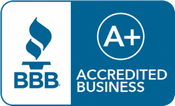
Business CPA Firm Answers FAQs to New Lease Accounting Standard
Published on January 31, 2019
As a full-service accounting firm, BGW CPA took a keen interest in the changes in lease accounting that went into effect in 2019 following the approval of the new rules by the Financial Accounting Standards Board (FASB).
The new standard, known also as Accounting Standards Codification Topic 842 (ASC 842), raised concerns for business owners and our business growth consultants, as ASC 842 may affect both current leases and future equipment financing decisions.
Part of accounting and auditing services is keeping our clients informed. To clear up any confusion, as well as illuminate positive impacts stemming from ASC 842, here are answers to the most common questions we’re fielding on the topic.
What exactly do you mean by lease?
Leases are contracts in which the property/asset owner allows another party to use the property/asset in exchange for something, usually money or other assets. In accounting, the two most common types of leases are operating and capital (or financing) leases.
ASC 842 doesn’t change how a business development CPA firm defines a lease. They are still classified as either operating or capital.
There are three “must haves” a professional accounting service looks for in a lease:
- An identifiable asset
- Control of that asset
- Right of substitution (no asset, no lease)
Leases are contracts in which the property/asset owner allows another party to use the property/asset in exchange for something, usually money or other assets. In accounting, the two most common types of leases are operating and capital (or financing) leases.
ASC 842 doesn’t really change the definition of a lease; we still classify leases as operating or capital.
There are three “must haves” when it comes to a lease.
- An identifiable asset.
- Control of that asset.
- Right of substitution (no asset, no lease).
Here are a few examples of different lease scenarios:
- An automobile lease is considered to be an identifiable asset because it would not be substituted at the discretion of the car dealership.
- The lease of a copy machine. If the lessee can replace the copier with an equivalent copier (as stipulated in the lease), this copy machine is not an asset because there is a right of substitution. The lessee is leasing the capacity of a copier, not a specific copier.
- A retail store is in a mall and the mall is open from 10 am to 8 pm. The retail store can open and close anytime during those hours. This is a lease because the retail store controls when they are open or closed, what type of inventory to carry, where to place it in the store, etc.
- All outsourcing arrangements which need to have dedicated services/facilities (i.e., computer servers to help with the prevention of cybersecurity) are identified assets and the arrangement is a lease.
Note that a leased employee is not considered a lease (it’s not a tangible asset).
Why should my company lease?
The reasons to lease -- most notably being financing, gaining access to assets, and reducing the full risk of ownership to an entity, among others -- remain unchanged by the new standard. The benefits may even be improved because of changes made to the tax code by the TCJA (more on that below).
- Tax management: Leasing allows lessees to more efficiently manage some of their taxes; when they cannot utilize all the deductions, the lessors can and are able to pass the benefits through via lower rates.
- Finance 100%: Arrange 100% financing of equipment, software, and services with 0% down payment while still recording less than 100% on your balance sheet.
- Keep up-to-date and avoid residual value risk: Keep current with technology by acquiring more and better equipment compared to loan financing and avoid residual risk because the lessor assumes that risk.
- Accelerate ROI/Improved ROA: Rather than capitalizing 100% of an asset, a capitalized lease is generally reported at a lesser amount.
- Cash flow management: Make smaller more manageable and flexible payments while the equipment generates revenue.
- Benefit from bundling: Bundle the equipment, installation, maintenance and more into a single, easy-to-manage solution.
- Save cash: Save limited cash for other areas of the business, such as expansion, improvements, marketing or R&D.
- Outsource asset management: The equipment financing company can manage an organization’s equipment from delivery to disposal.
- Customize terms: Set customized payments to match cashflow and even seasonal income fluctuations.
- Hedge against inflation: Lock in rates with a lease to avoid future inflation.
Note that a leased employee is not considered a lease (it’s not a tangible asset).
Why would a CPA firm for business recommend my company lease?
Our business growth consultants identify several reasons why a company chooses to lease -- most notably financing, gaining access to assets, and reducing the full risk of ownership to an entity. These motivations remain unaffected by the new standard and may even offer improved business tax planning benefits due to changes made to the tax code by the TCJA (more on that below).
- Business tax management: Leasing allows lessees to more efficiently manage some of their taxes; when they cannot utilize all the deductions, the lessors can – and are able to – pass the benefits through via lower rates
- Finance 100%: Arrange 100% financing of equipment, software, and services with a 0% down payment while still recording less than 100% on your balance sheet
- Keep up-to-date and avoid residual value risk: Keep current with technology by acquiring more and better equipment compared to loan financing and avoid residual risk because the lessor assumes that risk
- Accelerate ROI/Improved ROA: Rather than capitalizing 100% of an asset, a capitalized lease is generally reported at a lesser amount
- Cash flow management: Make smaller, more manageable, and flexible payments while the equipment generates revenue
- Benefit from bundling: Bundle the equipment, installation, maintenance, and more into a single, easy-to-manage solution
- Save cash: Save limited cash for other areas of the business, such as expansion, improvements, marketing, or R&D
- Outsource asset management: The equipment financing company can manage an organization’s equipment from delivery to disposal
- Customize terms: Set customized payments to match cashflow and even seasonal income fluctuations
- Hedge against inflation: Lock in rates with a lease to avoid future inflation
What are the big changes from a professional accounting and tax service point of view?
A leased asset (aka “right-to-use asset”) and lease liability will be recognized for substantially all leases whose terms are 12 months or more. Currently, operating leases are kept off-balance sheets. A lease term is defined as a fixed, non-cancelable term with renewal option(s) and periods to get to a bargain purchase option.
Example: Retail space is in a building with an economic life of 40 years. The fixed, noncancelable portion of the lease is 10 years plus there’s a 10-year renewal option. If the company’s management determined that it’s reasonably certain they’ll stay there for longer than 10 years, then your lease term is 20 years. If not, then it’s 10 years.
Income statement expense recognition will be similar to current U.S. GAAP.
Lease classification (operating vs. finance) under the new standard is similar to current U.S. GAAP. However, assets of a specialized nature with no alternative use to the lessor will trigger finance lease classification.
Substantially all leases will create an asset and liability on the balance sheet, and that attention will shift toward the determination of whether or not an arrangement contains a lease. As a result, the new standard has extensive guidance on the identification of a lease. Services arrangements would typically not result in the recognition of an asset and liability.
Lessor accounting is substantially unchanged.
Related party lease accounting shifts away from substance-based or intent-based criteria under current U.S. GAAP to accounting for legally enforceable terms under the new standard.
Payment amounts include the fixed payments and amounts that are classified as lease guarantees (property worth “x” when turned in). Variable payments are not part of the lease payments. Variable payments are defined as those which are based on a rate and include an index (CPI) and are also not tied to rate or rent (such as contingent payments). Once the payment amount is determined, then a discount rate is determined. Discount rates can be calculated using the rate the lessor is charging the lessee (if known, use this), the entities incremental borrowing rate (ideal rate), or the risk-free rate of return (this method is allowed for privately held companies) – the rate is really low which will cause the liability to be higher than it would be.
Leasehold improvements still remain separate; however, direct costs are incurred for a broker to get the lease into the asset balance.
Any prepayments (“other”) that are made are included in the asset cost. Other costs to include are:
- Amounts paid to a broker – which would have only been incurred for the leased asset.
- Lessor incentives (reduced rent, free rent)
Previously, the recognition, measurement, and presentation of expenses and cash flows arising from a lease primarily depended on its classification as a finance (capital) lease or operating lease. Now, in a huge change of practice, there will be no distinction. Companies must include both types of leases on their books.
For finance leases, lessees will be required to:
- Recognize a right-of-use asset and a lease liability, initially measured at the present value of the lease payment, in the statement of financial position.
- Recognize interest on the lease liability separately from amortization of the right-of-use asset in the statement of comprehensive income.
- Classify repayments of the principal portion of the lease liability within financing activities and payments of interest on the lease liability and variable lease payments within operating activities in the statement of cash flows.
For operating leases, lessees will be required to:
- Recognize a right-of-use asset and a lease liability, initially measured at the present value of the lease payment, in the statement of financial position.
- Recognize a single lease cost, calculated so that the cost of the lease is allocated over the lease term on a generally straight-line basis.
- Classify all cash payments within operating activities in the statement of cash flows.
The update also will require disclosures to help investors and other financial statement users better understand the amount, timing, and uncertainty of cash flows arising from leases. These disclosures include qualitative and quantitative requirements, providing additional information about the amounts recorded in the financial statements.
Who does ASC 842 impact?
The new lease standard affects all entities that enter into leases. Public companies, private enterprises, and not-for-profit organizations are all impacted by this standard.
Does all of this impact my income statement?
Our business CPA services team confirms that the new rules have no impact on the income statement. There should be no effect on debt covenants. The rules for classifying whether a new contract is a capital (finance) lease or an operating lease are virtually the same as before under generally accepted accounting principles (GAAP) except that an operating lease will now be a capitalized operating lease. Although an operating lease will now be capitalized, the capitalized asset cost by definition will be lower than a loan or cash purchase resulting in a lower asset against which return on assets would be measured.
How will ASC 842 impact financial statements?
A right-of-use asset (long-term asset) and a lease liability, with a current and long-term portion, will be recognized for substantially all leases. What does this mean from a professional accounting and tax service point of view? Certain debt covenants and financial ratios that companies look at regularly, such as working capital and debt to equity, among others, could be impacted.
How did business tax reform impact leasing in general?
Tax reform passed at the end of 2017, known as the Tax Cuts and Jobs Act (TCJA), introduced many changes that organizations should consider when making equipment financing decisions. TCJA provides more reasons now than previously for business growth strategy consultants to recommend leasing or financing property using tax-oriented financing structures. The pure complexity of the interrelated rules in TCJA by themselves may lead some organizations to lease.
Under TCJA, the current deductibility of interest expense is limited to 30% of the tax version of EBITDA, calculated as Earnings Before Interest, Taxes, (tax) Depreciation, and Amortization multiplied by 30%. In a few years, the limitation will be further reduced to 30% of tax EBIT, an even lower number particularly given the high rate of tax depreciation. Additionally, U.S. subsidiaries of multinational parents will also have to contend with BEAT (Base Erosion Anti-Abuse Tax), which forces them to further examine the extent of their intercompany borrowing. Leasing helps lessees avoid both the interest and BEAT limitations because rent deductions remain unrestricted compared to interest payments.
Leasing allows companies without the ability to efficiently use 100% bonus depreciation to gain the benefits of it through a reduced lease rate when the lessor can claim the 100% bonus depreciation. Lessees may also reap an economic benefit by entering into a sale-leaseback for an asset they may have expensed 100% in 2017 at a 35% tax rate since the gain taxed on the sale (assume a 100% gain) would now be taxed at a more favorable rate of 21%.
As organizations modify existing leases or enter into new leases or contracts, they will benefit from an understanding of all the implications of the new standard. It’s important to check with a professional tax advisor or accountant who can address the business’ particular situation. With adequate information and preparation to implement ASC 842, lessees can continue to reap the advantages of financing.
Note that the new literature did not address intangible assets (such as licensing arrangements), inventory (leased), and short-term leases (those less than 12 months). The advice of qualified tax preparation and planning services is highly recommended for properly navigating standards surrounding leases.







